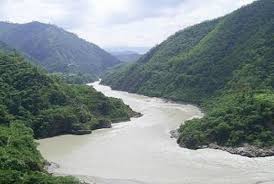Har Ghar Gangajal Scheme
The Bihar Government is set to launch the Har Ghar Gangajal project to deliver water from Ganga river to the dry areas in the state that do not lie along the course of the river.
What is Har Ghar Gangajal scheme?
Under the Har Ghar Gangajal scheme, the surplus water from the Ganga river will be collected during the monsoon season to be treated, stored and piped to Rajgir, Gaya, and Bodhgaya – the regions that have long relied on tankers from nearby districts for drinking water source during the dry season.
How will the Har Ghar Gangajal scheme be implemented?
- It will be launched as part of the state government’s Jal, Jeevan, Hariyali scheme.
- The first phase of the project will be implemented with an outlay of Rs.4,000 crore.
- Under this phase, large pumps will lift Ganga water from Hathidah, close to Mokama, to supply water for to some 7.5 lakh homes in Rajgir, Bodhgaya, and Gaya.
- The collected water will initially be stored in reservoirs in Rajgir and Gaya, which will then be channeled to three treatment-and-purification plants.
- The treated water will be supplied to the public via pipes from Hathidah.
- The project will make use of existing, renovated and new water connections to reach every beneficiary household.
- The second phase of the project, which is expected to be launched in 2023, will be provide the Ganga water to Nawada.
- Under this scheme, every individual beneficiary will receive 135 litres (two large buckets) of Ganga water every day to be used for drinking and domestic purposes.
Why is there a need for this scheme?
Rajgir is a rocky and water-deficit region. Unplanned and indiscriminate use of groundwater has depleted the subterranean reservoirs and lowered the water table and affected the quality of the water in Gaya and Rajgir.
A large portion of urban water supply continues to be delivered through tube wells. This has resulted in water tables depleting between 2 and 4 meters between 2014-15 and 2020-21. District administrations of these regions have been arranging water tankers to supply drinking water in the town areas during summer seasons. This is a short-term and unreliable measure to combat water scarcity in these dry regions. The Har Ghar Gangajal project aims to address this challenge.
What are the benefits of the scheme?
Heavy silting of the riverbed, especially in Mokama, Hathidah, Barh, and Lakhisarai, and the release of water from dams upstream in Nepal has resulted in flooding even if the monsoon rainfall in Bihar is not exceptionally heavy. Har Ghar Gangajal scheme, while providing water sources for dry regions, will help alleviate distress caused by annual flooding of the Ganga River banks.
The scheme would be implemented only during the four months of the monsoon seasons, when the Ganga river has surplus water. This ensures that the diversion of water does not lead to depletion of the river, disturb its natural flow and potential changes in its course. The state government is currently planning on building 13 additional reservoirs in Gaya and Rajgir to store the diverted floodwaters in the near future.
Month: Current Affairs – November, 2022
Category: Government Schemes Current Affairs • India Nation & States Current Affairs



